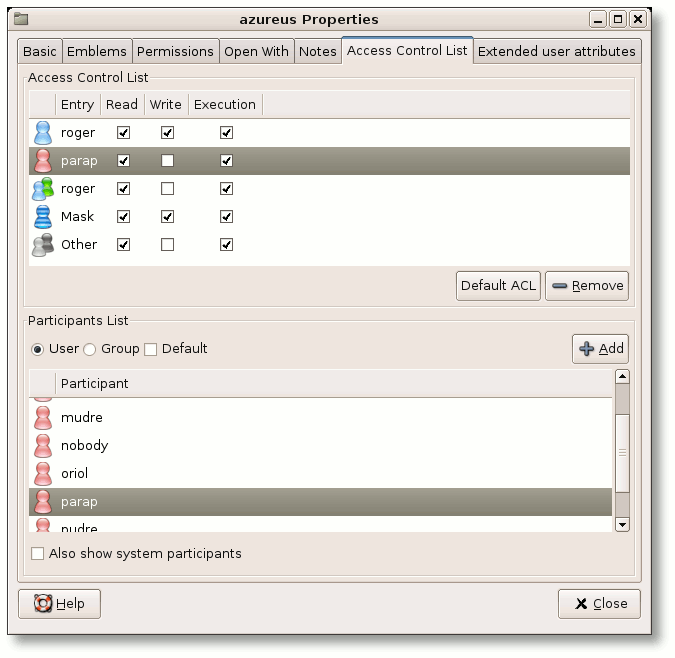File Access Control List (ACL) permissions have been around for linux for quite some time, but it's one of those very useful features that for unknown reasons nobody talks about. They are an extension to the traditional and very limited unix User-Group-World permissions that allows the user to set access to the file system on a per-user basis. It's very similar to windows NTFS file permissions management.
There's a very nice extension for nautilus (gnome file browser) to manage file ACL. The extension is named
Eiciel, and you can find it here:
http://rofi.roger-ferrer.org/eiciel/If you have fedora, you can install it by typing in the command line:
sudo yum install eicielYou also need to enable ACL for the partition. To do that you need to edit the /etc/fstab configuration file, and change the appropriate row. Where it says "defaults" should read "rw,acl" for ext2 and ext3 partitions, for example the line:
/dev/sdb5 /mnt/data ext3 defaults 1 2Should become:
/dev/sdb5 /mnt/data ext3 rw,acl 1 2And mount, or remount the partition with:
sudo mount /mnt/data to mount it.
sudo mount -o remount /mnt/data to remount it, if it was already mounted.
Now, if you right-click->Properties on a folder in that partition, you'll get a new "Access Control List" tab where you can set fine-grained access permissions easily. You can for example allow access to a folder to a single user, and not the rest of the users.
